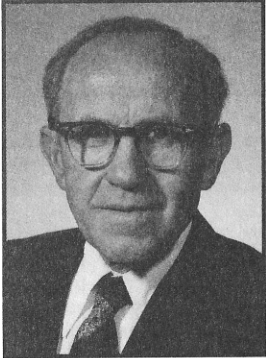As spring breathes new life into coastal Maryland and the iconic cherry blossoms bloom in soft splashes of pink and white, it is a time of new beginnings. In the heart of it all, Salt Seventh-day Adventist Church is embracing a fresh approach to community outreach. With the Jewish holidays of Purim and Passover recently celebrated, the church’s Jewish relations team has created a series of educational and spiritually enriching handouts designed to help church members better understand Jewish traditions and to build meaningful connections with their Jewish neighbors.
Nestled in the Chesapeake Bay region, with its mix of coastal charm and rich cultural history, the perfect backdrop for the Jewish relations team’s initiative unfolds. The air is filled with the scent of challah from Jewish bakeries, the savory kick of Old Bay seasoning wafting from nearby crab shacks, and the crisp, briny breeze off the water. Across this diverse region, from active Jewish communities to neighborhoods rich in tradition, church members have unique opportunities to forge relationships that bridge faith and culture.
Salt Seventh-day Adventist Church’s handouts do more than educate; they provide practical, culturally sensitive ways for church members to engage with their Jewish neighbors. Each handout highlights a key holiday or theme from the Jewish calendar, offering clear steps to build relationships and demonstrate care in ways that respect Jewish traditions.
A Purim Invitation to Connect
First, the handout titled Personal Purim Outreach, introduces readers to the joyful Jewish holiday of Purim, which commemorates the biblical story of Esther. In a clear and engaging format, the Jewish relations team explains the holiday’s history and meaning, offering simple ways Christians can reach out.
Additionally, the handouts also include tips for attending the lively Megillah reading of Esther in a synagogue, which is often an immersive experience. Guests often don elaborate costumes adorned with sparkling sequins, infusing a sense of carnival into the event. Groggers, noisemakers used to drown out Haman’s name, fill the air as a joyful symbol of the victory of good over evil. Bold colors of masks and shimmering decorations enhance the festive atmosphere, blending celebration with the deeper spiritual themes of deliverance and hope.
Throughout, the team highlights the importance of approaching these interactions with genuine respect and care, ensuring that each outreach is thoughtful and deeply considerate of Jewish traditions. Church members are encouraged to be mindful of synagogue etiquette, including dressing modestly and maintaining quiet reverence during prayer times. These small but meaningful actions serve as powerful expressions of respect.
“Purim is a lighter, more festive occasion,” said Dustin (last name withheld for privacy), a member of the Jewish relations team. “It’s a great chance to express love and show support for the Jewish people. These small gestures can make a big difference.”
Dustin recalls his own experience celebrating Purim in an Orthodox Jewish community. “With just a little preparation, I was ready to celebrate alongside my neighbors. Instead of the traditional Purim candies, I assembled five small gift bags filled with a variety of fruits from Costco. It was a healthy, kosher, and economical choice,” he shared. When Purim arrived, Dustin met a friend at the local Chabad house for the Megillah reading and spent the rest of the day distributing gift packages to neighbors. “It was a huge success. I had more meaningful conversations with my neighbors that one day than in the entire year,” he added.
Purim provides a unique opportunity to connect with Jewish neighbors, and Dustin assures Christians that they do not need to be an expert in Jewish culture to make an impact. All it takes is a genuine desire to show kindness and respect. He encourages everyone to participate in Purim outreach, saying, “We all have Jewish friends and neighbors, and celebrating Purim is a simple yet meaningful way to show support and strengthen our relationships with them.”
Additionally, Dustin highlights the value of offering help with preparations or clean-up, simple gestures that promote goodwill and strengthen relationships within the community. By engaging in these acts of kindness, church members can honor the holiday’s spirit while deepening their Jewish friendships, demonstrating both respect and a commitment to understanding.
Passover Experiences for the Whole Church
As the lighthearted joy of Purim fades into the solemnity of Passover, the Jewish relations team introduces a second handout, Passover: The Celebration of Liberty, which encourages deeper spiritual reflection on this sacred holiday. Passover provides a meaningful opportunity to explore the rich spiritual and symbolic connections between Jewish tradition and the Christian faith. This handout helps church members host a Passover-themed educational event, featuring Bible studies, presentations, and a communion-style seder meal that connects the ancient customs of the Passover Seder to the story of salvation in Jesus.
“Passover is a time of reflection and renewal,” said Dustin. “It’s a perfect opportunity for us to better understand the heritage of our faith and honor the story of God’s deliverance, both then and now.” These materials illuminate the meaning behind the Passover table’s symbolic items, from the unleavened matzah to the bitter herbs, sweet charoset, and salty water. Each food represents profound themes of freedom, redemption, and sacrifice, connecting past struggles with present hope. Church members gain insight into the Jewish foundations of their faith, discovering the common threads of deliverance, hope, and renewal shared by both traditions.
For those looking to take the next step, the Jewish relations team offers more ways to engage:
Host a Seder Meal: Organize a seder meal that includes symbolic foods like matzah (unleavened bread), maror (bitter herbs), and charoset (a sweet mixture of apples, nuts, and wine). Use the team’s handouts to explain the meaning behind each item and discuss how these elements point to spiritual truths in the Christian faith.
Bible Study on Exodus: Lead a Bible study focusing on the book of Exodus, exploring the themes of deliverance, sacrifice, and salvation. Emphasize how these themes resonate both in Jewish and Christian traditions, drawing connections between the Passover story and the death and resurrection of Jesus.
Invite a Jewish Friend: If you have Jewish neighbors, invite them to your Passover seder as an opportunity to engage in meaningful conversation and share the significance of the holiday. Be sure to ask questions about their traditions and listen with respect.
Freedom and Justice in the Adventist Message
Abolitionism is deeply rooted in the Adventist message, from Sojourner Truth’s advocacy for freedom to Ellen White’s strong condemnation of slavery as a sin. Both saw slavery as a moral and spiritual crisis, linking it to the Biblical story of Egypt and God’s call for deliverance. Though slavery was abolished, modern human trafficking continues to enslave millions worldwide. This ongoing injustice, while not diminishing the significance of other oppressed groups or pressing issues in society, calls us to persist in the fight for freedom.
One of the key insights from the Jewish relations team’s educational materials draws a clear connection between Adventism and Abolitionism. This reflection invites us to remember the oppressed in prayer, and it challenges us to consider how we can continue the fight for freedom, extending liberation to those still enslaved today.
Contextualizing Jewish Traditions within Adventism
These materials resonate deeply with the broader perspective of the Seventh-day Adventist Church, as articulated by the World Jewish Adventist Advisory. This Advisory recognizes the celebration of Jewish holidays and feasts as a meaningful form of contextualization in reaching out to the Jewish community. However, they make an important distinction: these observances should not be seen as a literal practice of Levitical rituals.
In addition, the Advisory stresses that continuing ceremonial sacrifices in such a manner would negate the role of the Messiah, Yeshua, and His fulfillment of those very rituals. “The festivals and fasts today serve an important and instructional function in light of His sacrifice,” the Advisory notes, emphasizing that these feasts help both Jews and non-Jews alike experience the key biblical narratives, enriching spiritual growth. “Marking these key events helps participants personally identify with the plan of salvation, engaging both the body and the mind in true worship.”
Importantly, the Advisory does not teach that observance of Jewish customs, traditions, and practices associated with the feasts is obligatory. It acknowledges that these feasts find their ultimate meaning in the ministry of the Messiah, and while they provide valuable instruction, participation is not required for salvation. Engaging with these practices, whether by marking the rhythms of joy during the feasts or simply experiencing them through thoughtful observance, enhances Adventist spiritual life.
Affirming that Jews who join the Seventh-day Adventist Church need not relinquish their cultural and spiritual identity, the Advisory states, “We do not believe that it is necessary for Jews to relinquish either their identity as Jews or their spiritual and cultural traditions, if they affiliate with the Seventh- day Adventist Church.”
Walking in Understanding and Love
Reflecting thorough research and a compassionate approach, the Jewish relations team’s handouts go beyond being simple lesson plans, inviting church members to engage with curiosity, care, and love that reflect Christ’s teachings. By embracing these thoughtful steps, church members can build stronger relationships with the Jewish faith community, deepen their understanding of Jewish traditions, and express love in meaningful, tangible ways.
Whether motivated by these joyous and faith-building holidays or the desire to form lasting connections, the team’s work shows that even the smallest gestures can leave a lasting impact. Here are a few practical steps anyone can take:
Spread the Joy of Purim: Consider greeting your Jewish neighbors with a cheerful “Happy Purim” or sharing kosher-certified treats like cookies or chocolate. It’s a simple way to show support and build goodwill. You could also send a greeting card that highlights the joy and festivity of the holiday.
Attend a Synagogue Service: For those interested in learning more about Jewish traditions firsthand, attending a synagogue service is a powerful way to observe and honor Jewish practices. It’s an opportunity to see the customs of Jewish worship in action and connect with the community on a deeper level.
If you want to bring this same spirit of understanding to your own community, please reach out to Dustin for these resources. Simply send an email using the contact information on our website, and your message will be forwarded to him. These materials will be available on the Salt Seventh-day Adventist Church website soon. If they are not yet visible, we recommend checking back in the near future.
Image Credits
Chefallen – own work
First chapter of a hand-written scroll of the Book of Esther, with reader’s pointer
File: Megillat Esther (1).jpg; formatted for same size as other photos on website but no changes made to the image
https://creativecommons.org/licenses/by-sa/3.0



